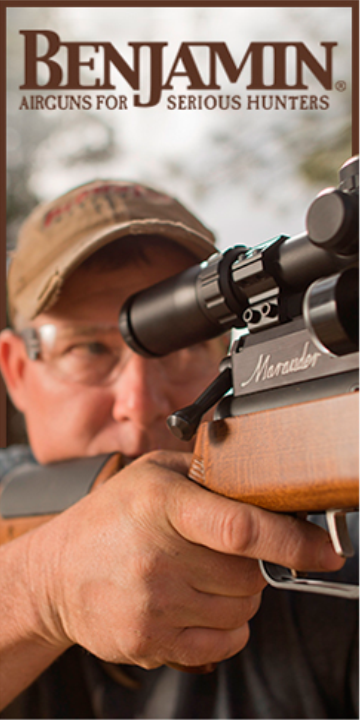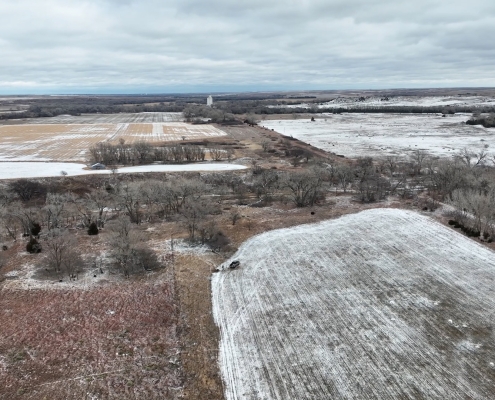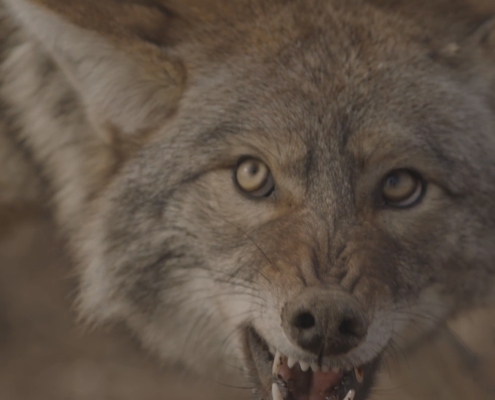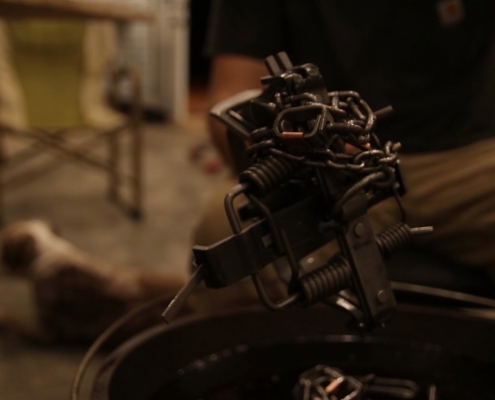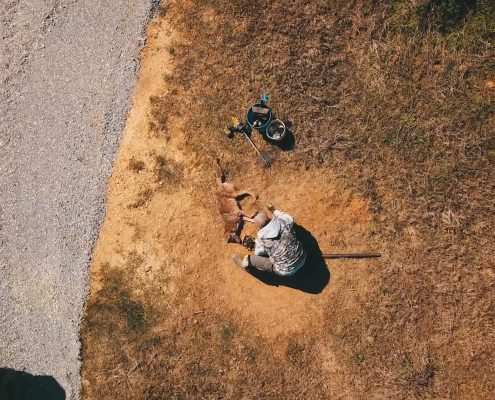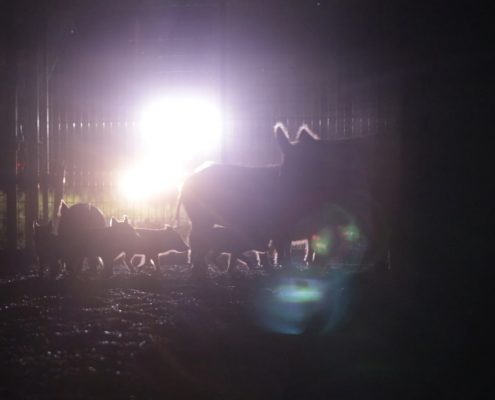Trapping Coyotes
The brutally cold weather presented many obstacles for Casey during his time spent trapping coyotes in Illinois. The biggest concern was how to cover the traps. In part 1, we showed you how to make wax dirt to eliminate the issue of traps getting frozen in the ground. The wax dirt is very powdery and a trapper must take extra effort to pack it on the trap. If a coyote steps on the set and feels movement beneath his foot he could back out and not engage the set. Placement of the trap is key to prevent the coyote from taking multiple steps around the set.
Locations are also vital to success. Changes in habitat, field lanes, or fence rows all present great funnel opportunities for trap locations. Often times these areas don’t have a definitive spot for a trap, but rather a general area. These spots are great for multiple sets and relying on your lure to do the work for you. Locating these areas on an aerial photo can point you in the right direction as to where to place your sets. Traveling to these areas and seeing them for yourself will confirm what the aerial showed. Putting together all of these pieces to the puzzle can help you become a more successful trapper.



